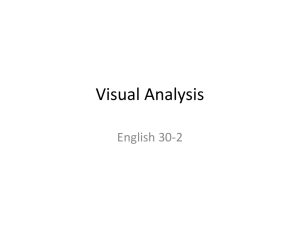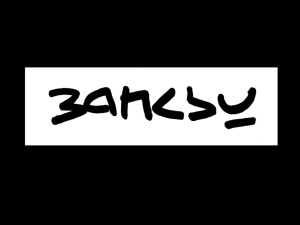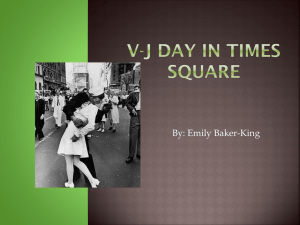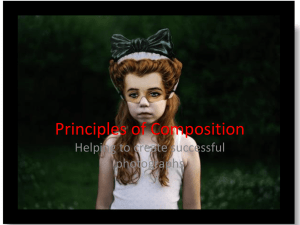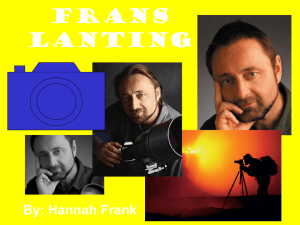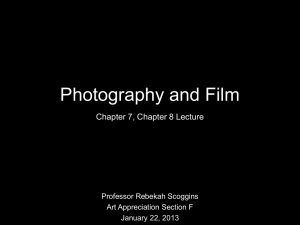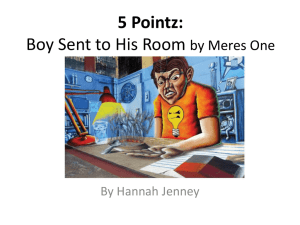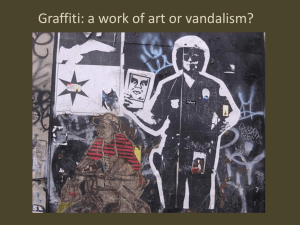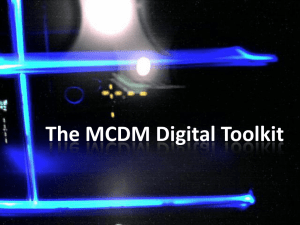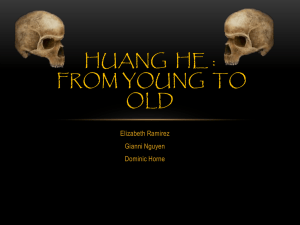The Streets Are Art: Slideshow
advertisement
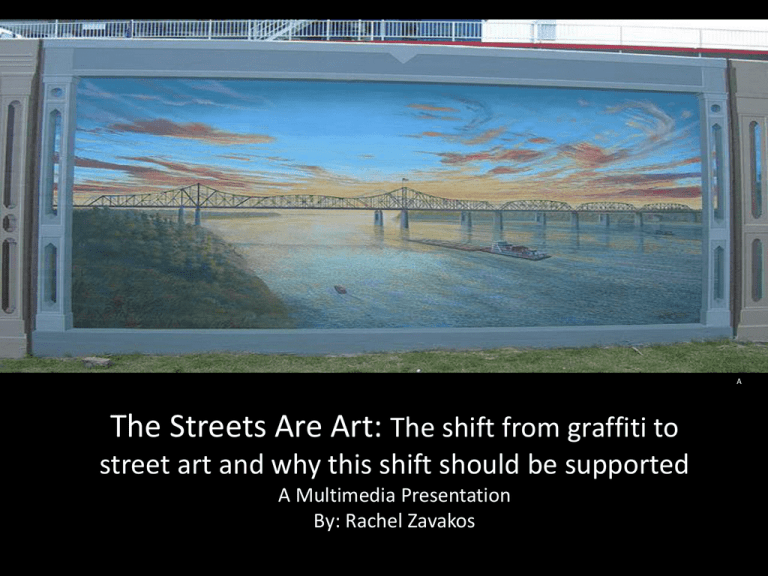
A The Streets Are Art: The shift from graffiti to street art and why this shift should be supported A Multimedia Presentation By: Rachel Zavakos B C Graffiti, as described by G. James Daichendt, “is a text-based art form that involves writing one’s name or the name of something important to the artist on a public surface.”1 Graffiti can make the city look dingy and run-down, and depress its citizens. D E F Quite often, graffiti also has profane and crude language that is seen by children of all ages. It is often offensive to passersby. G Laws such as New York City’s 10-117 make graffiti illegal for these exact reasons. If caught, graffiti artists can be arrested for acts of vandalism. H Despite these laws, however, graffiti continues to occur, even in broad daylight. I Recently, a new artistic style known as street art has begun around the world. This movement aims to switch from the traditional crude and sloppy graffiti to art that can actually decorate the streets and have a positive effect on the city. G. James Daichendt explains that street art “is less concerned with letters but emphasizes the visual image, contextual use of space, and uses a wider range of materials that extend beyond the spray can.”1 This colorful zebra is an example of such artwork . J An elusive British street artist named “Banksy” recently visited the United States and conducted a “one month residency on the streets of New York.” Throughout the month of October, 2013, Banksy produced a new piece of street art every day, and posted a picture of it on his instagram.2 Some of his pieces follow. K L Banksy’s project helped build community throughout the city as groups of citizens who admired his work banded together and connected in search of his latest piece. The scavenger hunt also took citizens to places of the city to which they may not otherwise have ventured. Their quest shows that street art can bring the community together and expose the community to different parts of the city. M In addition to his stint in New York City, Banksy also decorated the Israel Wall with this image of an oasis beyond the wall. Street art can help connect cities to nature. Street artists use nature as both their medium and their subject, which helps bring nature to the dull city streets, making them a happier place to live and cheering up citizens. Psychological Studies have shown that “people’s psychological health is associated with their relationship to nature” and that “immersion in either simulated or actual nature boost[s] vitality.”3 Street art, with nature as a medium or subject, can cheer up citizens by reminding them of their connection to the natural world. N In addition to the medium and the subject being natural, street art brings people into the fresh air and nature to create and view the artwork. Instead of being cooped up in a studio or gallery, artists and art viewers alike can create and enjoy the art outdoors. O Many cities have recognized the benefits of street art and have commissioned murals on bridges, buildings, and walls. If the city doesn’t commission the murals, often the building owners will to make their buildings more colorful and happy. For example: P This Bridge in South Bend, Indiana, right off of The University of Notre Dame’s campus; Q This whale mural on the side of a building in downtown Atlanta, Georgia; R And this mural on a retaining wall along Riverside Drive in Dayton, Ohio. S T A study of college students and their reactions to colors showed that dark colors such as grays, blacks, and browns that often compose city buildings -- like the one in the previous picture -- elicited negative emotional associations… U …while bright colors, such as those used in murals to brighten the city, elicited mainly positive emotional responses.4 V Everyone can agree that happiness should be promoted and protected. And promoting and protecting street art while continuing to crack down on crude graffiti can be a way to augment society’s happiness as a whole. W Sources: 1. Daichendt, G. James. "ARTIST-DRIVEN Initiatives for Art Education: What we can Learn from Street Art." Art Edu 66.5 (Sep 2013): 6-12. Print 2. Nessen, Stephen, narr. “Banksy Project Sends Fans Online To Find Art In the Streets.” All Things Considered. Hosted by Audie Cornish. NPR. 16 Oct. 2013. Radio. 3. Howell, Andrew, et al. "Nature Connectedness: Associations with Well-being and Mindfulness." Personality and Individual Differences 51.2 (2011): 166-71. Print 4. Epps, Helen H., and Naz Kaya. "Relationship between color and emotion: a study of college students." College Student Journal 38.3 (2004): 396+. Expanded Academic ASAP. Web. 13 Nov. 2013 Photographs: A. Emerson, Jimmy. Two Bridges at Sunset Mural. 2008. Flickr. Photograph. 6 December 2013. B. Cigliano, Peter. Dingy Building Lower Manhattan. 2008. Flickr. Photograph. 6 December 2013. C. Darcyadelaide. Depression Please Cut to the Chase. 2012. Flickr. Photograph. 6 December 2013. D. Shall, Don. Battery Steele (1942). 2013. Flickr. Photograph. 6 December 2013. E. Keaggy, Bill. P107095. 2011. Flickr. Photograph. 6 December 2013. F. Hussein, Abeer. Cute Baby. 2011. Flickr. Photograph. 6 December 2013. G. Unknown. India Police Arrest 2nd Man Over UK Girl’s Murder. 2008. dalje.com. Photograph. 6 December 2013. H. Gaido. The Graffiti Artists. 2008. Deviant Art. Photograph. 6 December 2013. I. Tyrrell, Mat. A Zebra Depicted in French Street Art. 2010. Wikimedia Commons. Photograph. 6 December 2013. J. Lazurite. 240/365 Hooded Figure. 2009. Flickr. Photograph. 6 December 2013. K. Lynch, Soctt. Banksy October 9 Installment “Better Out Than In”. 2013. Wikimedia Commons. Photograph. December 6 2013. L. Miller, Robert. Workers cut into the Hustler Club’s roll down gate. 2013. New York Post. Photograph. 6 December 2013. M. Ortner, Markus. Mauer-bethelehem. 2005. Flickr. Photograph. 6 December 2013. N. BK. Laughter is the language of the Soul. 2013. Flickr. Photograph. 6 December 2013. O. Shawnlipowski. SCAD Sidwalk Arts Festival. 2004. Wikimedia Commons. Photograph. 6 December 2013. P. Zavakos, Rachel. “South Bend 933 Bridge Mural.” 2013. jpg. Q. Itsbooyer. Whale Mural. 2009. Flickr. Photograph. 6 December 2013. R. Lee, Bonnie. Riverside Dr, Dayton, OH. 2008. Flickr. Photograph. 6 December 2013. S. Unknown. Red Zastava. 2008. Flickriver. Photograph. 6 December 2013. T. Wolff, Sasha. Sadness. 2009. Wikimedia Commons. Photograph. 6 December 2013. U. NYCDOT. Intersection. 2011. Flickr. Photograph. 6 December 2013 V. Camdiluv. Colours of Happiness. 2007. Wikimedia Commons. Photograph. 6 December 2013. W. Antonio, Jules. 5 Pointz Mural, Queens, NYC. 2012. Fickr. Photograph. 6 December 2013.
